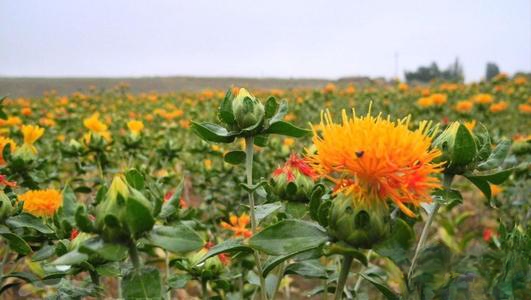Safflower cultivation technology
Safflower is the dried flower of the plant Safflower of Asteraceae. Also known as Sichuan safflower and grass safflower. It is an annual or biennial herb. The tubular flowers without ovary are used as medicine. It mainly contains safflower glycoside, safflower quinone glycoside, and neosafflower glycoside. It is warm in nature and spicy in taste.
It has the effects of promoting blood circulation, dredge meridians, dissipating blood stasis and relieving pain.
It is used for amenorrhea, dysmenorrhea, lochia retention, lumps and masses, bruises, swelling and pain of sores, coronary heart disease, angina pectoris, pain caused by blood stasis and other diseases.
The oil content of seeds is 20~30%, and safflower oil is an important industrial raw material.
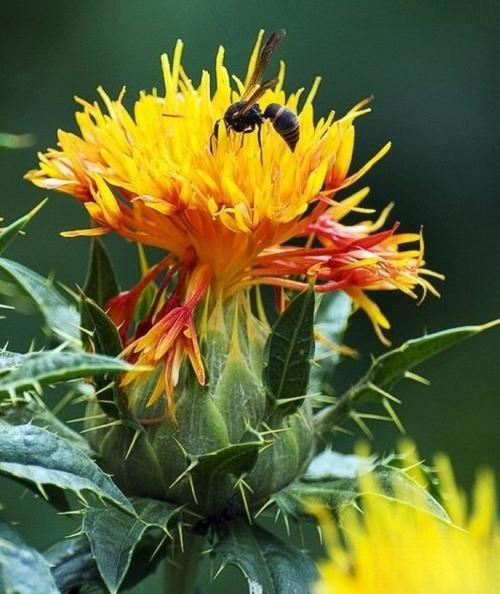
1. Reproduction method
Safflower is propagated by seeds. Use 2.5-3 kg of seeds per mu of land.
2. Site selection and land preparation
After the previous crop is harvested, the soil should be turned over immediately and the drainage ditch should be cleared. When sowing, the soil should be turned over once more, about 25cm deep, and then raked and leveled. For cultivation on flat land, it is advisable to make high ridges 1.7m wide, and ridges are not required for sloping land. If the land is barren, it is advisable to apply compost or manure in combination with land preparation.
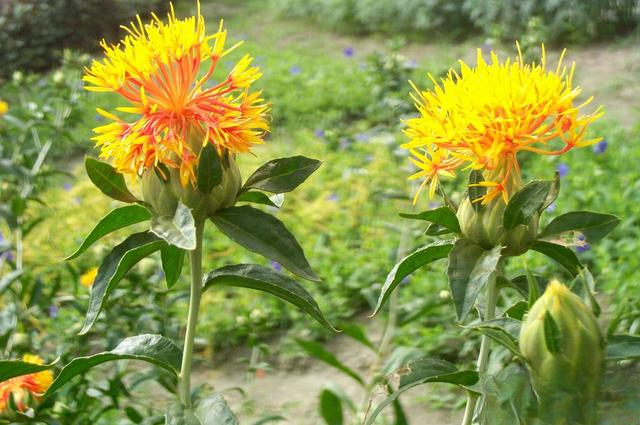
3. Seeding and transplanting
The sowing period of safflower should be considered based on specific environmental conditions such as temperature, light and precipitation in each location.
In the south, autumn sowing is mainly carried out from early October to late November. If sowing is too early, the temperature is high and the plants grow vigorously, which is easy to be damaged by frost; if sowing is too late, the temperature is low and the growth is poor, which affects the yield. Generally, hole sowing is adopted. The row spacing is 30~40cm and the hole depth is 7~10cm. After sowing, apply light human and animal manure water or cover the hole with a handful of plant ash mixed with human and animal manure water, and finally cover with fine soil until no plant ash is visible.
Spring sowing is suitable for the north, preferably from early March to early April. Sowing should be done when the soil begins to thaw and the soil moisture is good. The earlier the better. Drill sowing is often used, with a row spacing of 30 to 50 cm and a depth of about 6 cm. After sowing, cover the soil with a thickness of 2 to 3 cm.

4. Field management
(1) When the seedlings have 3 true leaves, carry out the first thinning. For hole sowing, leave 4 to 5 seedlings in each hole. For row sowing, leave 1 seedling every 10 cm.
When the seedlings are about 10 cm tall, thin out the seedlings: for hole sowing, thin out 2 to 3 seedlings per hole; for row sowing, leave one seedling every 20 cm.
(2) Irrigation: Water should be applied promptly during droughts; when there is too much rain, attention should be paid to drainage. Poor drainage can easily lead to pests.
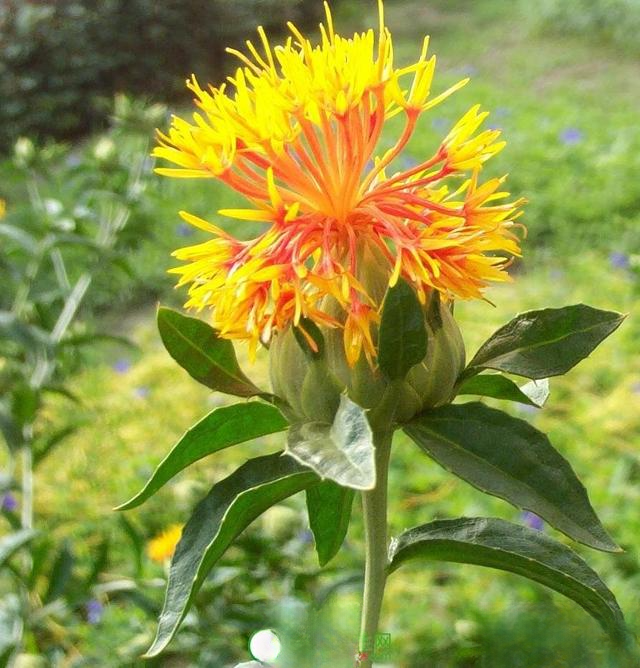
(3) Intertillage and weeding Generally, intertillage and weeding are done three times:
The first and second times are carried out simultaneously with thinning the seedlings, and the topsoil is loosened by hoeing;
The third time is before the plants are sealed in the bed, and the soil is added at the same time to prevent lodging.
(4) Top dressing should be carried out in combination with tillage and weeding.
The first and second times, after thinning the seedlings, apply 1000-1500kg of clear human and animal manure or 10kg of urea per mu each time.
The third time is before the plants are covered with beds. It is advisable to apply a heavy topdressing of concentrated fertilizer, 2000~2500kg of human and animal manure, 20~25kg of superphosphate, and 7~10kg of potassium oxide fertilizer per mu.

5. Pest and disease control
(1) Diseases
①Anthrax
It is a disease of safflower in the middle and late stages, mostly occurring in the rainy and humid months of April and May. It mainly harms branches, stems, flower buds and involucres.
Prevention and control methods: Use disease-resistant varieties; avoid continuous cropping, rotate with gramineous plants; pay attention to drainage. Cut off the diseased parts after the disease occurs, remove the seriously diseased plants, and spray with 1:1:120 Bordeaux mixture or 400-500 times diluted 65% Zineb wettable powder once every 10 days, and spray 2-3 times in a row.
②Rust often
Occurs at the same time as anthracnose. High humidity is conducive to the occurrence of rust, which often infects the cotyledons, leaves and bracts of safflower.
Prevention and control methods: Choose high and dry land or high ridges for planting, and pay attention to drainage; avoid continuous cropping; remove diseased plants; mix seeds with 25% triadimefon; spray 0.2~0.3 degrees Baume lime sulfur mixture, or 500~1000 times diluted 25% triadimefon wettable powder at the beginning of the disease, spray once every 10 days, and spray 2~3 times in a row.
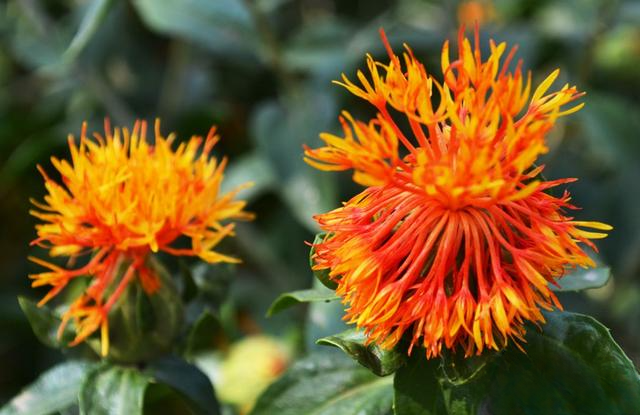
③Fusarium wilt, also known as root rot
It is one of the main diseases of safflower. It starts to occur in May and is most serious on rainy days before flowering. The branches and leaves of the affected plants gradually turn yellow and die.
Prevention and control methods: Implement crop rotation; select disease-free plants for seeds; pull out diseased plants, collect stumps and diseased leaves and burn them; irrigate roots with 500-1000 times diluted 50% carbendazim wettable powder.
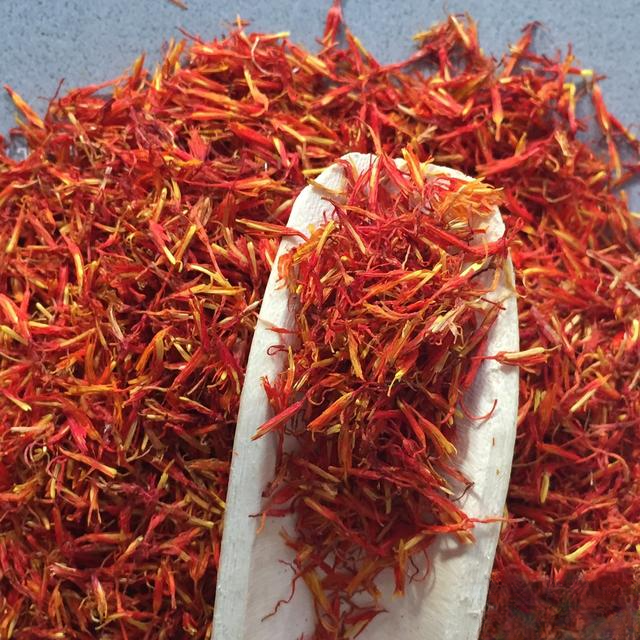
(2) Pests
①Red spider
During the peak period of budding and flowering, the spider mites often gather on the back of the leaves and suck the sap. The affected leaves first develop yellow spots, then turn yellow and fall off.
Prevention and control methods: Spray with 800~1500 times diluted 40% dimethoate emulsifiable concentrate.
②Aphids
It occurs around the time of flowering in May and June, harming stems and leaves.
Prevention and control methods: Spray with 800~1500 times diluted 40% dimethoate emulsifiable concentrate or 800 times diluted 15% imidacloprid.
③ Heart borer
It harms the flower buds, causing them to rot, fail to bloom and wither.
Prevention and control methods: Spray with 800~1000 times diluted 40% dimethoate emulsifiable concentrate or 90% crystalline trichlorfon.
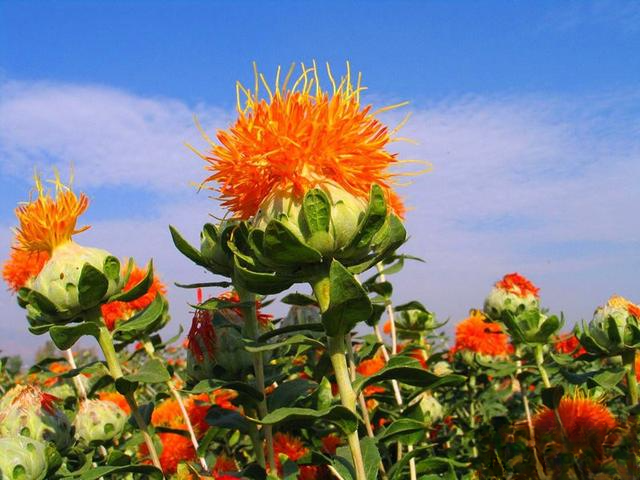
6. Harvesting and processing
1. Harvesting method
(1) Picking flowers
The harvesting period of safflower varies greatly due to different climates and sowing periods. Generally, the flowering period is from May to June in the south and from June to July in the north. It takes 10 to 15 days to harvest. Organizing manpower to harvest during the flowering period is one of the keys to a good harvest.
The standard for picking flowers is when the top of the corolla changes from yellow to red. If the flowers are picked too early, the corolla will be golden yellow and will not be oily after drying. Each head inflorescence can be harvested 2-3 times in a row, once every 2-3 days.
It is best to pick flowers on a sunny morning after the dew has dried, that is, between 9 and 10 a.m. Because after 10 a.m., the sharp thorns on the edges and tips of the leaves and bracts of safflowers become hard, it is easy to hurt your hands when picking flowers.
When picking flowers, you can wrap linen around your chest, hang a small bamboo basket, pinch the corolla with your thumb, index finger and middle finger and lift it up, pick the flowers and put them in the basket.
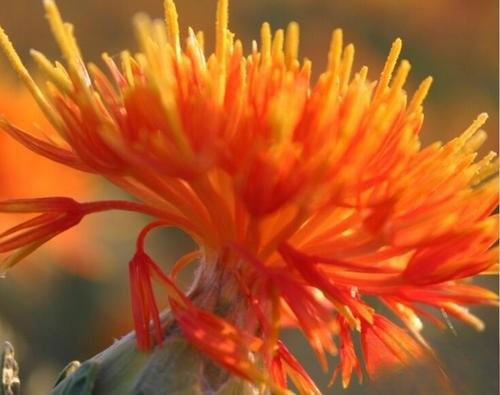
(2) Seed harvesting
Selecting good varieties of safflower for planting is one of the keys to increasing production. Generally, plants with strong growth, moderate plant height, many branches, large flowers, orange-red flower color, early maturity and no diseases and insect pests are selected as seed plants. When the seeds are mature, single plants with many fruits are selected and harvested, dried and stored separately to be used as seeds for the next year. The seed yield per mu is 80kg.
2. Processing method
After picking, spread the flowers on a clean reed mat, cover with white paper and dry in the sun, or place in a ventilated and cool place to dry, or dry at 40-50℃. Do not stack them after picking, and do not turn them over during the drying process.
